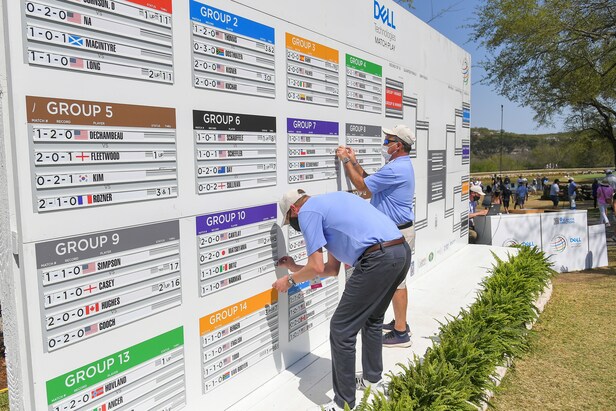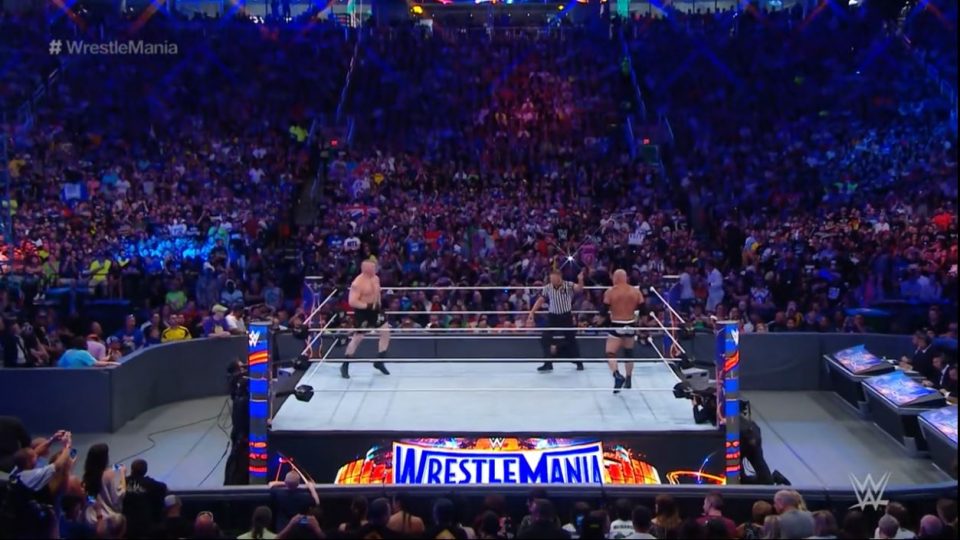
Editor’s Note: This article originally appeared as a newsletter to Golf Digest+ subscribers. To subscribe to Golf Digest+ for exclusive content and more, click here.
Bryson DeChambeau has loomed large in the collective golf psyche for the better part of a decade. In 2015, he became the fifth player to win the NCAA individual title and the U.S. Amateur in the same year. His single-length irons and math-heavy approach turned him into something of a phenom upon turning pro … until he reinvented himself with a bulk-up for the ages and a seminal U.S. Open victory. He is a headline machine, a lightning rod for controversy, among the biggest names in our sport, decked out in enough corporate logos to make a NASCAR driver envious.
The 49-year-old Englishman oscillated between the European Tour and the Challenge Tour before a late-career renaissance, winning his first event on the Old World circuit in his 478th try last May. A month later, his silky swing, Dad Bod and salt-and-pepper beard led the U.S. Open after two rounds. That he wore a hat from his home club in the U.K., absent a paid sponsor, only amplified the Cinderella vibes. He finished 50th, a reminder of how long 72 holes is, but a runner-up finish in Dubai in January has him ranked 60th in the world—good enough to qualify for his first World Golf Championship, this week’s Dell Technologies Match Play.
Bland and DeChambeau were drawn into the same group and will face-off Wednesday at Austin Country Club in golf’s mano-y-mano format. It’s a tantalizing matchup, a proper David vs. Goliath tilt, an archetype missing from the monotony of a stroke-play dominated world golf schedule. The emergence of an alternate tour—tours?—has spotlighted the repetitiveness of the PGA Tour slate, with seemingly all parties united in the belief that alternative formats would benefit the sport. So let’s add some more match play to the mix, right?
If only it were that simple. Consider the issues the lone yearly match-play event has had in generating interest and a compelling product. From 1999 through 2014, the event featured a single-elimination, 64-man bracket that was essentially copy-and-pasted from March Madness—four regions, with the four one seeds playing the 16 seeds in the first round, then the winner of the 8-9 matchup, etc. It produced early-round drama, but TV executives and corporate sponsors weren’t pleased when top stars were run out of town by a hot 14 seed on Wednesday afternoon. The format switched to its current iteration in 2015, with 16 four-man groups playing round robin and only the group’s top finisher advancing to the knockout rounds. This guaranteed the stars would play at least three rounds and gave them the opportunity to overcome a fluky loss yet still qualify for the single-elimination portion. The goal: high-quality, high-intensity weekend clashes between big-draw golfers.
It simply hasn’t materialized. Let’s start with the high-quality portion. Match-play golf depends on two vital ingredients: meaningful stakes and birdies. Ideally it’ll have both, but the presence of at least one is absolutely essential. Watching two golfers battle to make fewer bogeys than the other quickly becomes a snooze fest. Billy Horschel made exactly one birdie over 17 holes in winning last year’s championship match over Scottie Scheffler. When you have only two golfers playing at the end of a long week, these kind of duds can happen, and they’re virtually unwatchable.
Still, poor golf is palatable if the intensity is high—like at the Ryder Cup, where each session creates legitimate buzz because the players care deeply. It’s their one opportunity to represent a cause bigger than their own bank account or World Ranking, and each match counts for one point no matter the participants or hole-winning scores. The same is true for the NCAA team championship, or the U.S. Amateur, where life-changing exemptions into three major championships are at stake. The 2018 Tiger Woods vs. Phil Mickelson showdown, which ushered in a recent influx of made-for-TV matches, overcame spotty golf because it featured the two best players of their generation, who are far from best friends, playing for $9 million dollars. Every player in this week’s WGC is doing fine financially, and each will leave Austin with a solid paycheck. This isn’t exactly career-defining stuff, and the player’s muted reactions speak to that. You won’t see anyone raising the roof or shotgunning beers this week.
Then there’s the quasi randomness of it all. Golf Twitter loves a good breakout performance, but the general public wants to watch the players it knows. In last year’s event, just one of the 16 top seeds advanced past the group stage. The finals featured Horschel and Scheffler. The other two men in the semis: Matt Kuchar, who did not post another top 10 all season; and Victor Perez, now No. 124 in the World Ranking.
This isn’t to denigrate match play; it’s simply to underscore the difficulty of implementing the format in modern professional golf. There is, after all, a reason the WGC-Dell Technologies stands alone.
Sam Burns is a big, hairy, American winning machine. The 25-year-old canned a 32-footer on the second playoff hole to defeat Davis Riley and successfully defend his Valspar Championship title. It’s his third victory in his last 22 starts, and the LSU grad leapfrogged Dustin Johnson to get to No. 10 in the World Rankings. DJ now sits at No. 11, the first time he’s been outside the top 10 in seven years. Rory McIlroy is now the oldest player in the top 10, and the average age of the top 10 golfers in the world is at an all-time low of 27.1 years old. The kids continue their takeover.
—A series of so-so results has Jon Rahm’s grasp on World No. 1 looking more tenuous than ever. Collin Morikawa, Viktor Hovland, Patrick Cantlay and Scottie Scheffler could each finish the week as the world’s top-ranked player. There’s more rankings drama further down the list, for every player inside the top 50 of the World Ranking come Monday gets into the Masters. The majority of those guys have already qualified, but there are a few who need to get in on their ranking and find themselves on the bubble: No. 48 Seamus Power, No. 50 Cameron Tringale, No. 54 Alex Noren and No. 60 Richard Bland.
—There’s an opposite-field event this week, which always produces a fun entry list. Those PGA Tour players outside the top 60ish in the World Ranking have the option of playing the Corales Puntacana Resort and Club Championship in the Dominican Republic, where Joel Dahmen will defend his title.
—The LPGA Tour is back stateside after a two-week Asian Swing with this week’s JTBC Classic at Aviara Golf Club outside San Diego. World No. 2 Nelly Korda will not play as she continues to recover from a blood clotshe announced on March 13. Jin Young Ko, the World No. 1 who has won six of her last 10 starts, will play on U.S. soil for the first time in 2022. Danielle Kang, Inbee Park, Lydia Ko, Minjee Lee, Lexi Thompson and Leona Maguire are also in the field.
—Shaun Norris, a 39-year-old South African, won his first DP World Tour title on Sunday on home soil, beating countryman Dean Burmester to win the Steyn City Championship outside Johannesburg. It was the rare occurrence when the top two ranked players in the field finished first and second on the leader board. The victory took Norris to No. 62 in the World Ranking, and a victory in this week’s Qatar Masters could see him qualify for the Masters.
—Carl Yuan became the third mainland Chinese player to win on the Korn Ferry Tour by edging former U.S. Amateur champion Peter Uihlein in a playoff for the Chitimacha Louisiana Open. The KFT stays in the Bayou state this week with the Lake Charles Championship.
Why pro golf can't figure out match play - GolfDigest.com
Read More

No comments:
Post a Comment